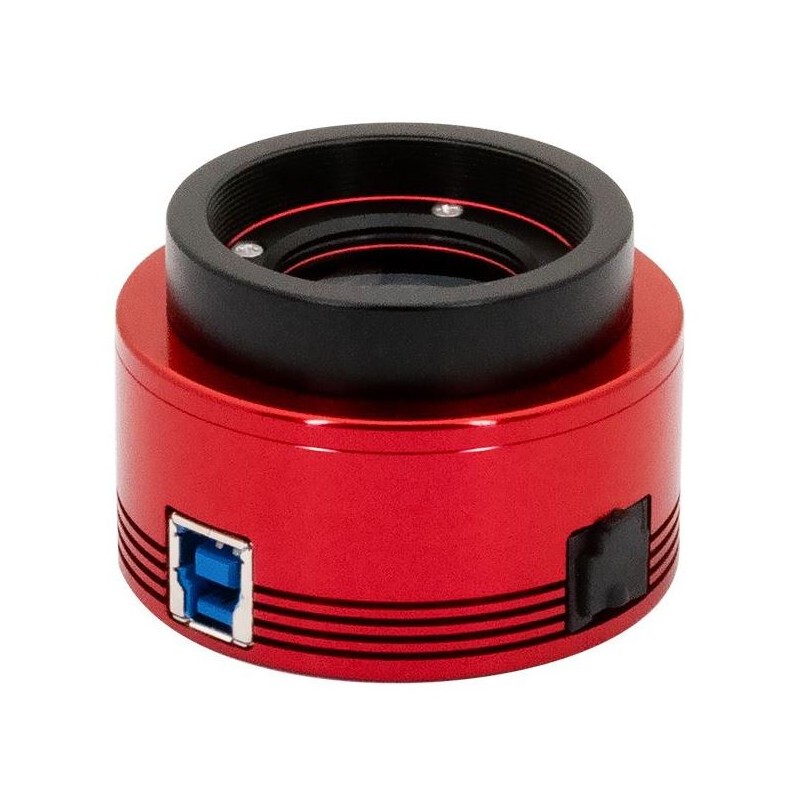Our company is involved in preparing official permits from the Polish Ministry of Development and Technology, which allows us to export all dual-use drones, optics, and portable radiophones without VAT on the Polish side / and without VAT on the Ukrainian side.
ZWO Camera ASI 294 MM Mono (71020)
The ASI 294MM is the first uncooled CMOS camera to feature the new Sony IMX492 sensor. This camera is ideal for imaging the Sun, Moon, and planets, as well as deep sky objects such as nebulae and galaxies. It uses Sony’s advanced back-illuminated sensor technology to deliver outstanding sensitivity. With 4.6 µm pixels, the ASI 294MM is a true all-rounder, offering excellent sensitivity even with very short exposure times. For even higher resolution, the camera can be used in "unlocked mode," reducing the pixel size to 2.3 µm.
117411.61 ₽ net price (non-EU countries)
Anatolii Livashevskyi
Product Manager![]() /
/ ![]()
+48721808900![]() +48721808900
+48721808900![]() +48721808900
+48721808900
[email protected]
Description
The ASI 294MM is the first uncooled CMOS camera to feature the new Sony IMX492 sensor. This camera is ideal for imaging the Sun, Moon, and planets, as well as deep sky objects such as nebulae and galaxies. It uses Sony’s advanced back-illuminated sensor technology to deliver outstanding sensitivity.
With 4.6 µm pixels, the ASI 294MM is a true all-rounder, offering excellent sensitivity even with very short exposure times. For even higher resolution, the camera can be used in "unlocked mode," reducing the pixel size to 2.3 µm.
Thanks to extremely short exposure times and high sensitivity, this camera allows you to minimize the effects of atmospheric turbulence (seeing) when capturing images of the Moon or planets. The sensor’s high resolution lets you record fine details, even with telescopes that have shorter focal lengths.
For deep sky photography, the ASI 294MM’s high sensitivity means you can capture nebulae and galaxies in just a few seconds. Even without active cooling, you can achieve low-noise, high-resolution images. By increasing the GAIN setting (similar to adjusting ISO on a DSLR), you can reduce exposure times to under 30 seconds, further minimizing issues from turbulence or tracking inaccuracies.
The camera features a USB 3.0 interface for fast data transfer, and can also be operated via USB 2.0. The sensitive CMOS sensor has a diagonal of 23 mm, with adjustable pixel size of either 4.6 µm or 2.3 µm. The camera includes an AR clear glass filter, which allows full transmission into the infrared. If you wish to block IR, an additional IR-cut filter is required.
HCG mode
When the gain is set above 120, readout noise drops below 2e. This mode provides low-noise images even at very high sensitivity.
Full well capacity
In "locked 63700e" mode, bright stars are less likely to become overexposed, resulting in a better signal-to-noise ratio.
Specifications
Capacity:
Sensor type: CMOS (Sony IMX492)
Sensor size: 19.3 x 13 mm
Megapixels: 11.7
Pixel size: 4.63 µm
Resolution: 4144 x 2822 pixels
Bit depth: 14
Active cooling: No
Interfaces: USB 3.0, ST-4
Telescope connection: 1.25" & T2
Color camera: No
Operating temperature: -5°C to 50°C
Maximum exposure time: 33.3 minutes
Minimum exposure time: 32 µs
Frames per second: 16.3 (at full resolution)
Readout noise: 1.3 e
Full well capacity: 66,000 e
Flange focal distance: 12.5 mm
Power supply: 5V (via USB)
Sensor diagonal: 16 mm
Equipment:
Filter wheel: No
General:
Weight: 129 g
Series: ASI 294
Diameter: 62 mm
Length: 36 mm
Area of application:
AllSky, Meteors: No
Autoguider: Yes
Moon and planets: Yes
Nebulae and galaxies: Yes
Data sheet
Official permits of the Ministry of Development and Technology
Our company is involved in preparing official permits from the Polish Ministry of Development and Technology, which allows us to export all dual-use drones, optics, and portable radiophones without VAT on the Polish side / and without VAT on the Ukrainian side.




